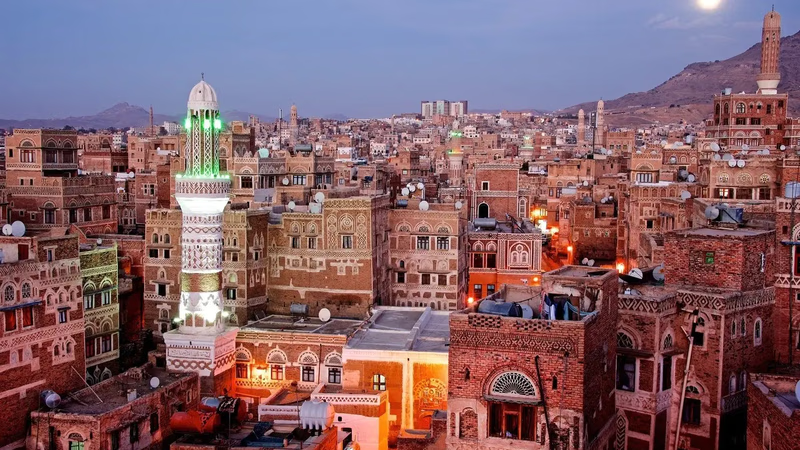
Aden: A key port city in Yemen"s trade landscape. "
Aden is a port city located in the southern part of Yemen. It has a strategic location along the Gulf of Aden and has historically been an important hub for trade and commerce. Taiz is a city in southwestern Yemen, situated in the Yemeni Highlands. It is known for its historical significance, architectural heritage, and cultural traditions. Al Hudaydah, also known as Hodeidah, is a port city located on Yemen's Red Sea coast. It serves as a major gateway for imports and exports and has been a focal point in the ongoing conflict in Yemen.
Mukalla is a coastal city located in the Hadramaut Governorate in southeastern Yemen. It is an important commercial and fishing center in the region. Ibb is a city in central Yemen, known for its picturesque landscapes and terraced fields. It is an agricultural hub and a center for educational institutions. Dhamar is a city located south of Sana'a in central Yemen. It is known for its historical sites, including ancient ruins and mosques. Sayyan is a city in the San‘a’ Governorate, situated in the western part of Yemen. It is known for its scenic beauty and agricultural activities.
This beautiful city in the field of tourism is also on the list of important cities in Yemen. It is clear that this city has been rebuilt in recent years and is considered very valuable. Also, the city of Aden is one of the other important cities in Yemen that has been able to achieve good results in recent years, this city has seriously reached good economic approaches and is a trade route for it.
Taiz is another Yemeni city that has developed as a foundation. Taiz is on the list of Yemeni cities and is generally one of the cities that has been active in the field of academia in recent years. Hodeidah as well as Dhamar are among the cities that are seriously advanced and it is clear that they are seriously very precise and ideally advanced. The city of Hadramaut is one of the historical cities of Yemen. In general, this city has certain economic approaches, and in the coming years, efforts will be made to rebuild the lost parts of the city.
Yemen has had a special position in recent years. In general, Yemen can be considered a happy country at that time. The first government to be established in Yemen was called Mo'inian, who ruled the land around 1200 BC. The commercial level of this people has been vast, from the Persian Gulf to the shores of the Mediterranean Sea. The next government in this country is Qutban, Qutban was established in the first millennium BC and continued until the second century AD.
The return of the Indian Ocean to the Red Sea is also followed in certain periods. The Sabaeans ruled the region for about nine centuries. This government was overthrown by the Homerians. The Hamirian rule lasted from 515 BC to 531 BC and was extinct by the Abyssinians. In 1750, the land became part of the Ottoman Empire and became independent.
-

Yemen"s economy has faced severe challenges due to ongoing conflict, leading to a significant contraction in GDP and high inflation rates. The disruption of supply chains and reduced domestic production have increased reliance on imports, resulting in widespread job losses and high unemployment. The humanitarian crisis has escalated, with millions requiring assistance for basic needs such as food and healthcare. Despite these challenges, Yemen"s trade system has shown growth, with a 74% increase in export and import activities. The current account balance is approximately 13%, indicating some resilience in trade processes. However, the depreciation of the Yemeni rial has created exchange rate volatility, complicating business operations. Foreign direct investment is projected to grow by 15%, while crude oil production remains significant at over 11%. Yemen"s ease of doing business has improved by 18%, reflecting potential opportunities for trade despite the political instability that deters international investment.
The conflict has also disrupted trade routes and hindered commercial activities, but humanitarian aid imports remain vital. Overall, while Yemen faces substantial economic hurdles, there are signs of growth in certain sectors that could be leveraged for future development. "
-
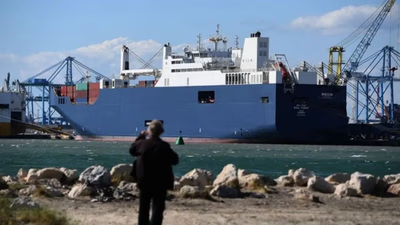
Saudi Arabia and the UAE have been pivotal in supporting Yemen"s internationally recognized government through military and humanitarian aid. The U. S. has also played a role by providing military support and facilitating peace negotiations. Various international organizations, including the World Bank and IMF, are engaged in addressing Yemen"s humanitarian crisis. The demographic profile of Yemen shows a young population with a literacy rate of about 50%. Recent improvements in economic conditions are evident, particularly in the organic food sector and machine equipment production. Urbanization efforts are underway, with significant growth in construction and transportation sectors.
The Yemeni government is increasingly visible in its investment strategies, aiming to enhance economic stability. Additionally, the UN and EU have been active in promoting peace and development initiatives, while other Gulf Cooperation Council (GCC) countries contribute through aid programs. The evolving dynamics of international support reflect the complexities of the ongoing conflict and humanitarian needs.
-
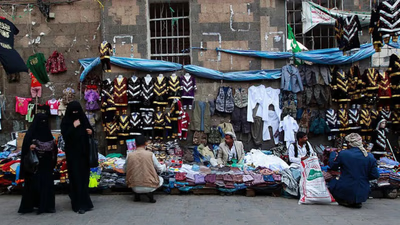
Yemen"s legal framework is shaped by its 2001 constitution, which establishes the government"s structure and individual rights. Islamic law, or Sharia, significantly influences personal, family, and criminal law. The civil law system, based on French law, includes the Yemeni Commercial Code that governs commercial activities such as contracts and business transactions. Property rights are regulated by laws concerning real estate ownership and transfers. Intellectual property laws protect creators" rights. The ongoing conflict has severely impacted Yemen"s economy, leading to increased poverty and a decline in agricultural production. Coffee, particularly Moka coffee, was once a significant export but has diminished due to war conditions. The agricultural sector now primarily focuses on qat cultivation for domestic use.
Oil and gas production has also suffered due to security issues stemming from the conflict. Family matters are largely governed by Sharia principles, while labor rights are outlined in the Yemeni Labor Law. Restoring political stability is crucial for reviving Yemen"s economy and alleviating poverty. "
-

Yemen"s major cities, including Aden, Taiz, Al Hudaydah, Mukalla, Ibb, Dhamar, and Sayyan, play crucial roles in the country"s trade and commerce landscape. Aden serves as a strategic port city along the Gulf of Aden, facilitating significant import and export activities. Al Hudaydah is another vital port on the Red Sea coast that acts as a gateway for trade despite ongoing conflicts. Taiz is recognized for its historical significance and has developed into an academic hub. Mukalla stands out as a commercial center in southeastern Yemen, while Ibb is known for its agricultural contributions. Dhamar boasts historical sites and is advancing economically. Sayyan combines scenic beauty with agricultural activities and tourism potential. The historical context of Yemen reveals a rich trading legacy dating back to ancient civilizations like the Sabaeans and Qutban.
The region"s strategic location has historically linked trade routes from the Persian Gulf to the Mediterranean Sea, making it an essential player in regional commerce. "
-
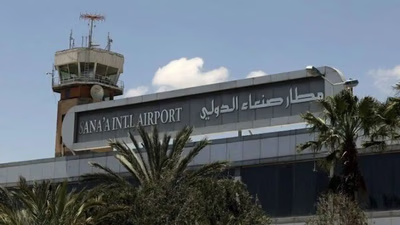
Yemen"s export and import system is significantly influenced by ongoing conflict, which has severely disrupted trade activities. The country traditionally exports crude oil, LNG, refined petroleum products, fish, and agricultural goods like coffee and honey. Key ports such as Aden, Hodeidah, and Mukalla are vital for these exports but have suffered from infrastructure damage due to the conflict. Despite these challenges, Yemen"s export and import system has shown growth of 74%, indicating a persistent effort to engage in trade. The economy relies heavily on imports for essential commodities like food and fuel due to insufficient domestic production capacity. The humanitarian crisis exacerbated by the conflict has made importing basic necessities crucial for survival. Additionally, Yemen"s ease of doing business has improved by 18%, suggesting potential opportunities for B2B marketplaces in the region. However, challenges remain with supply chain disruptions and security concerns affecting both importers and exporters. The reliance on international aid highlights the urgent need for effective supply chain solutions in Yemen"s trade landscape.
-
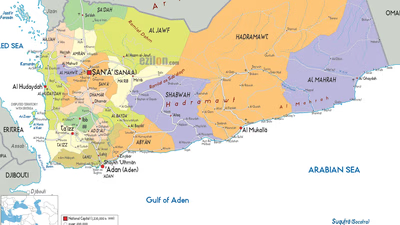
Yemen, located at the southern entrance of the Red Sea, serves as a vital trade hub due to its strategic position. The country has several key ports, including Aden and Hodeidah, facilitating significant import and export activities. Recent years have seen a shift in Yemen"s import landscape, with live food and livestock becoming predominant. Despite ongoing conflicts, Yemen"s economy has shown resilience, with a reported 12% growth in revenue generation and a notable 20% increase in GDP growth rate. Trade balances have improved by 14%, while the export-import system has expanded by 74%. The capital turnover situation has also increased by 17%, indicating a positive trend in economic activity. Improvements in infrastructure and ease of doing business have been observed, with internet speed rising by 12%. However, Yemen continues to face economic challenges due to political instability. The diverse climate across the country affects agricultural productivity and trade dynamics.






